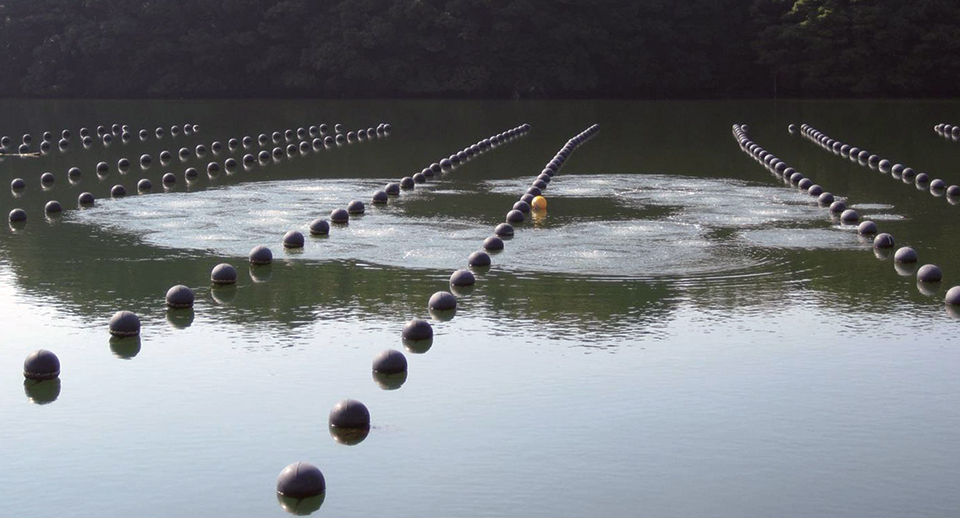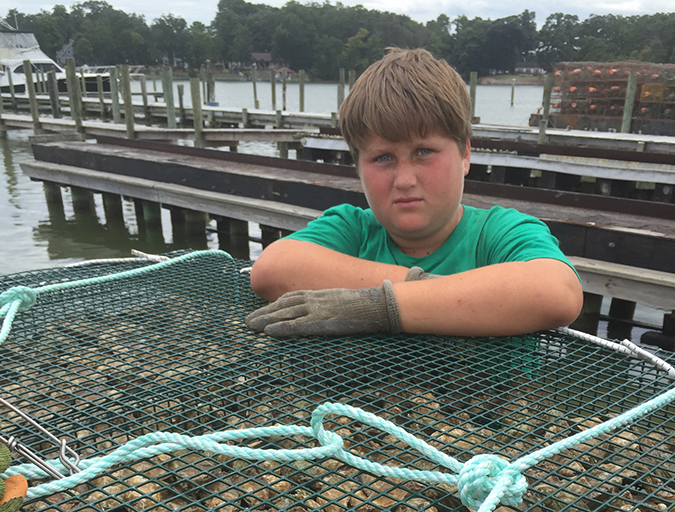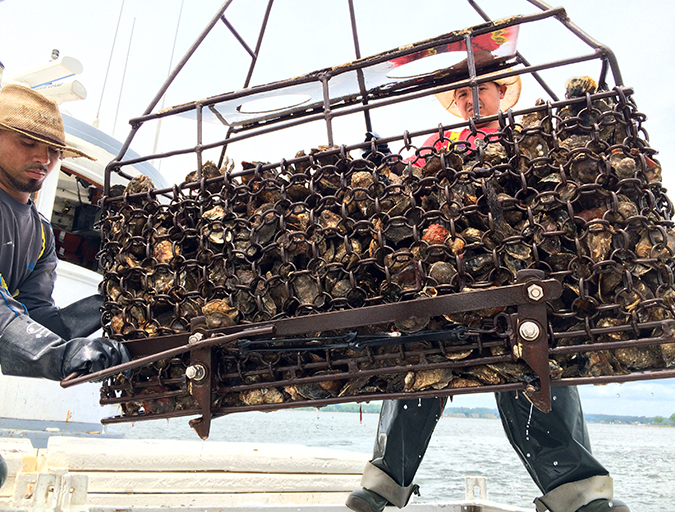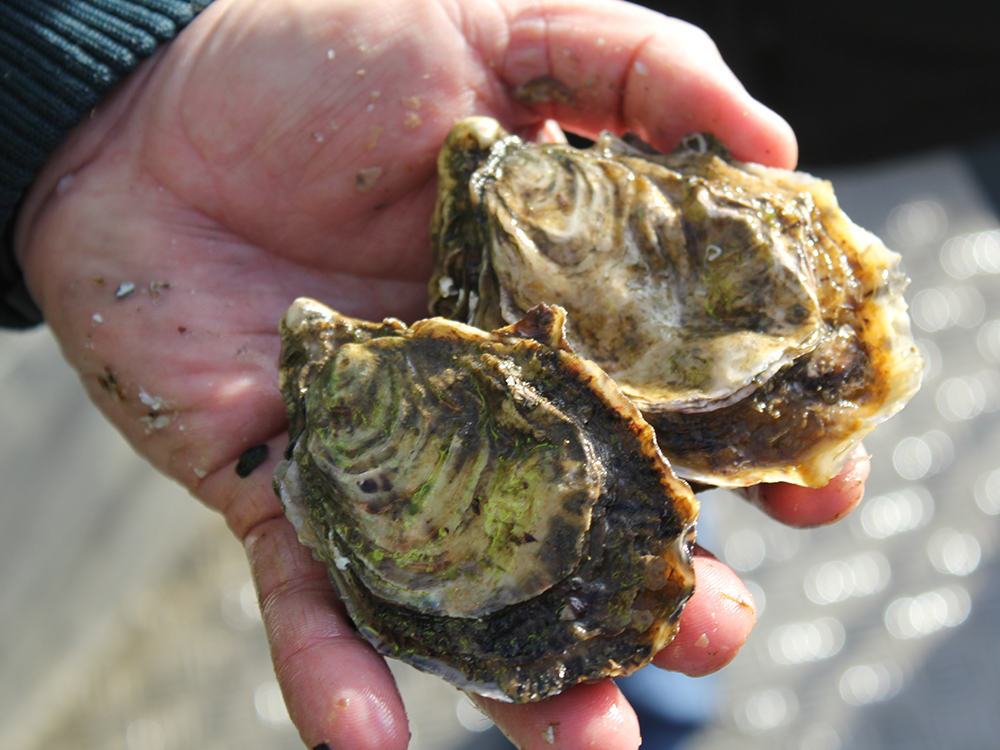Majority of illnesses associated with enteroviruses such as norovirus

For “foodies,” raw oysters served on the half-shell are reaching a level of popularity in North America not seen in many years. Half-shell oysters are now being marketed with references to their places of harvest and different tastes.
To meet the rising demand in the United States and throughout the world, there is increasing interest in oyster aquaculture. For example, in Virginia, USA, plantings of individual oysters increased from 6.2 million in 2005 to nearly 28.4 million in 2009. Aquaculture oyster sales increased from $843,842 in 2005 to $12.6 million in 2009 and are projected to increase dramatically in the upcoming years. Similar growth is predicted for other U.S. coastal states.
However, according to the Centers for Disease Control, eating raw or undercooked molluscan shellfish is the leading cause of illness associated with consumption of seafood in the United States. The majority of illnesses are associated with enteroviruses such as norovirus. Enteroviruses accumulate in shellfish from contaminated seawater or during handling and processing due to poor sanitation and lax manufacturing practices.
In addition to enteroviruses, oysters can concentrate bacterial pathogens. Vibrio vulnificus and V. parahaemolyticus are examples of two naturally occurring estuarine bacteria that can accumulate in oysters and cause illness and sometimes death in consumers.
Best practices
To help ensure the safety of oysters, aquaculture companies need to establish and follow best practices that include proper site selection to ensure that growing waters are clean and safe from pollution and other contaminants. A written sanitary survey should be required that encompasses environmental information on actual and potential pollution sources, including a shoreline survey; evaluation of the bacterial quality of the water; potential effects of meteorological, hydrodynamic and geographic conditions; and classification of the growing area. This survey must be updated on a routine basis.
Companies should also implement hazard analysis critical control point (HACCP) plans to address proper harvest, storage and processing procedures. They also need to implement and follow good manufacturing practices and good sanitary practices.
Post-harvest methods
There is interest and need for developing lower-cost, effective post-harvest processing (PHP) methods to help ensure the safety of shellfish. Methods have been tested and validated as effective in reducing naturally occurring bacterial pathogens such as V. vulnificus and V. parahaemolyticus to non-detectable levels. None of these PHP methods, however, has been shown to eliminate viruses without negatively impacting the sensory quality of the shellfish.
Prevention of viral contamination of shellfish starts with ensuring that the shellfish are harvested only from clean, approved waters. Companies must also implement and follow good sanitation practices and HACCP procedures during harvest, processing and storage.
The Emerging Infections Program of the Foodborne Diseases Active Surveillance Network (FoodNet) of the U.S. Centers for Disease Control and Prevention collects data from 10 U.S. states on laboratory-confirmed diseases caused by enteric pathogens transmitted through food. The report states that infections caused by Vibrio species are most often associated with the consumption of raw seafood, particularly oysters. Additional measures to reduce contamination of seafood more effectively are warranted, it said.
Illness from vibrios
In the United States, the Interstate Shellfish Sanitation Conference (ISSC) adopted a risk management plan to reduce the number of illnesses from V. vulnificus due to consumption of raw oysters. States that have two or more confirmed illnesses from V. vulnificus must develop and implement a V. vulnificus management plan.
If states are unable to meet the illness reduction levels, they must implement one of the following measures when water temperatures exceed 23.9 degrees-C or during the months of May through September: subject all oysters intended for raw half-shell market to a PHP, or label all oysters “For shucking by a certified dealer.”
In addition, the NSSP Model Ordinance states that: “every state from which oysters are harvested shall conduct a V. parahaemolyticus risk evaluation annually.” The evaluation is based on the ISSC risk model, which includes the number of V. parahaemolyticus outbreaks and sporadic cases linked to the consumption of oysters commercially harvested from the state, water temperatures, air temperatures, salinity, harvesting techniques and the quantity of harvest and its uses.
If the state’s risk evaluation determines that the risk of illness is reasonably likely to occur, then the authority must develop and adopt a V. parahaemolyticus control plan, which includes among other issues: post-harvest treatment by a process which has been demonstrated to reduce V. parahaemolyticus levels in oysters to the same levels found during times when the illness is not reasonably likely to occur, labeling “For shucking by a certified dealer,” closing harvest waters during certain months of the year when water temperatures are high or limiting time from harvest to refrigeration.
Post-harvest processing
A variety of post-harvest processing (PHP) methods are currently used to reduce V. vulnificus and V. parahaemolyticus to non-detectable levels. Hydrostatic high-pressure processing (HHP) requires expensive equipment, but reduces labor costs because it results in a shucked product. The batch process can treat about 2,440 kg/hour.
Mild heat pasteurization for 24 minutes at 52.0 degrees-C, followed by cooling to 4.4 degrees-C is another effective post-harvest method, but it is a patented process. Irradiation was approved by the U.S. Food and Drug Administration in 2001 for treating molluscan shellfish. Irradiation is not widely used due to the paucity of commercial irradiation facilities and the reluctance of consumers to purchase irradiated oysters.
Cryogenic individual quick freezing (IQF) at minus-59 degrees-C or lower for seven to nine minutes followed by several weeks of frozen storage at minus-18 degrees-C reduces V. vulnificus and V. parahaemolyticus below 30 or 3 colony-forming units per gram, respectively. This non-proprietary process requires a cryogenic tunnel and frozen storage capacity.
The capital costs associated with these PHP methods are relatively high for small aquaculture companies. Oysters processed using the methods are more expensive, and so slow the development of the aquaculture oyster industry. Practical lower-cost PHPs are needed by the industry.
Studies to control vibrios
In that regard, preliminary studies have been conducted to evaluate the potential for high-salinity relaying and rapid post-harvest chilling of oysters to control Vibrio levels in raw shellfish. Neither of the following methods can be relied on to reduce Vibrio species to non-detectable levels, but results indicated that the methods kept the oysters alive (in contrast to the PHP methods above) and helped reduce the Vibrio species present in the oysters.
Some studies have shown that moving oysters to waters with 30 to 34 ppt salinity significantly reduced V. vulnificus in oysters. Based on data from these previous studies, in 2010, the Virginia Seafood Agricultural Research and Extension Center (VSAREC) conducted preliminary studies with oysters held in recirculating tanks at different salinities. In summer 2011, it is planning to conduct additional high-salinity relay studies.
VSAREC studies
In 2010, VSAREC conducted two preliminary studies to determine the effects of different salinity levels (8, 17, and 34 ppt) on reducing the numbers of V. vulnificus and V. parahaemolyticus in oysters. The experimental system had three independent recirculating aquaculture systems (RAS) comprised of three tanks each. Each RAS had three individual 90-liter tanks fitted with a screened false bottom to allow separation and removal of pseudofeces produced by the oysters.
Tank water turnover in each RAS was two exchanges hourly. Water from each tank in each RAS flowed by gravity to three separate 500-LRAS reservoirs. The reservoirs contained fluidized media and served as primary biofiltration for each RAS. From the reservoirs, water was pumped through an up-flow bed biofilter for primary particulate removal and to an ultraviolet (U.V.) sterilizer.
Water then flowed back to the individual tanks through flow meters or back to the reservoirs via a shunt valve. System temperatures were maintained at 15 degrees-C. Air to each tank and for the media fluidization was provided by a remote rotary vane blower. Side-looped protein skimmers were installed on the reservoirs to remove smaller suspended solids and dissolved organics.
The results of the preliminary trials were mixed. Salinity levels of 34 ppt tended to reduce V. vulnificus levels, but increased V. parahaemolyticus. In contrast, at 8 ppt, V. vulnificus numbers increased and V. parahaemolyticus numbers decreased (Tables 1 and 2). Additional RAS studies will be conducted and compared with these results.
Jahncke, Oysters collected July 1, Table 1
| Salinity | Initial Number | 4 Days | 6 Days | 12 Days |
|---|---|---|---|---|
| 8 ppt | 930,000 V. vulnificus | Over 11,000 V. vulnificus | Over 11,000 V. vulnificus | 9,300 V. vulnificus |
| 8 ppt | 1,500 V. parahaemolyticus | 93 V. parahaemolyticus | 9 V. parahaemolyticus | 4 V. parahaemolyticus |
| 17 ppt | 930,000 V. vulnificus | 11,000 V. vulnificus | Over 11,000 V. vulnificus | 280 V. vulnificus |
| 17 ppt | 1,500 V. parahaemolyticus | Over 11,000 V. parahaemolyticus | 4,600 V. parahaemolyticus | 39 V. parahaemolyticus |
| 34 ppt | 930,000 V. vulnificus | Over 11,000 V. vulnificus | 2,400 V. vulnificus | 460 V. vulnificus |
| 34 ppt | 1,500 V. parahaemolyticus | 4,600 V. parahaemolyticus | 2,400 V. parahaemolyticus | 2,400 V. parahaemolyticus |
Jahncke, Oysters collected August 2, Table 2
| Salinity | Initial Number | 2 Days | 4 Days | 7 Days |
|---|---|---|---|---|
| 8 ppt | 4,600 V. vulnificus | Over 11,000 V. vulnificus | Over 11,000 V. vulnificus | Over 11,000 V. vulnificus |
| 8 ppt | 91 V. parahaemolyticus | 39 V. parahaemolyticus | 930 V. parahaemolyticus | 15 V. parahaemolyticus |
| 17 ppt | 4,600 V. vulnificus | 930 V. vulnificus | Over 11,000 V. vulnificus | Over 11,000 V. vulnificus |
| 17 ppt | 91 V. parahaemolyticus | Over 11,000 V. parahaemolyticus | 4,600 V. parahaemolyticus | 430 V. parahaemolyticus |
| 34 ppt | 4,600 V. vulnificus | 11,000 V. vulnificus | 2,400 V. vulnificus | 240 V. vulnificus |
| 34 ppt | 91 V. parahaemolyticus | 4,300 V. parahaemolyticus | 2,400 V. parahaemolyticus | 460 V. parahaemolyticus |
Post-harvest cooling
In addition to the salinity experiments, VSAREC conducted preliminary studies on factors that influence how rapidly oysters can be cooled after harvest to below 10 degrees-C. Rapid cooling of shellfish has been shown to control the growth rates of V. vulnificus and V. parahaemolyticus. Improved oyster safety from rapid cooling can be accomplished with small capital outlays where refrigerated stock rooms already exist.
In summary, cooling rates depended on the initial temperature of the shellfish, how the shellfish were packaged and the size and capacity of the refrigeration room. Shellfish that are loosely packed and placed in a refrigerated room with adequate air flow can easily be cooled from 23.9 to less than 10.0 degrees-C in two hours and to 4.4 degrees-C in 12.5 hours.
However, if warm oysters are placed into boxes, palletized and then placed into refrigerated storage, it can take up to 125 hours to reduce the temperature of oysters at the center of the pallets from 26.7 degrees-C to less than 10.0 degrees-C. Cooling rates can be reduced to 20.5 hours or less by placing spacers between the boxes on the pallet to allow air to flow around each box.
Ideally, the oysters should be cooled to 7.2 degrees-C before they are packaged and transported to market. Refrigerated transportation trucks are effective for maintaining, but not reducing product temperatures.
(Editor’s Note: This article was originally published in the March/April 2011 print edition of the Global Aquaculture Advocate.)
Author
-
Michael Jahncke, Ph.D.
Virginia Seafood Agricultural Research and Extension Center
102 South King Street
Hampton, Virginia 23669 USA[117,100,101,46,116,118,64,101,107,99,110,104,97,106,109]
Tagged With
Related Posts

Health & Welfare
Artificial upwelling maintains favorable summer environment for farmed oysters
The summer season poses threats for oyster aquaculture worldwide. In addition to high mortality, poor oyster quality and health – especially in enclosed bays – are often attributed to water stratification, high temperatures and hypoxia.

Responsibility
Ailing waterways hail the oyster’s return
The Lower Hudson Estuary and Chesapeake Bay, two waterways once home to thriving oyster beds, would welcome the shellfish’s return. Aquaculture initiatives in both areas aim to reinvigorate the water and the communities they support.

Intelligence
As ocean temperatures rise, so too will vibrio outbreaks
A study using a half-century of data has linked climate change and warming sea temperatures with an increase in illnesses from the common vibrio bacteria. Shellfish growers, fighting a particularly virulent strain of Vibrio parahaemolyticus, are changing their harvest protocols.

Intelligence
Behold the nutritious oyster
Oysters provide important, natural filtration of water and are an important component of many healthy coastal ecosystems because their active filtering can help improve and maintain water quality. For many coastal communities, oysters are an important food resource and excellent sources of protein and amino acids, zinc, selenium, iron and B-vitamins.


